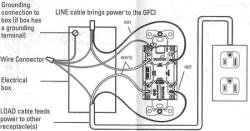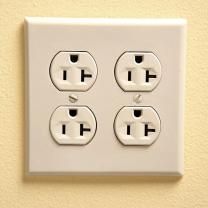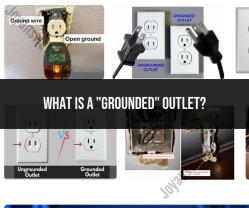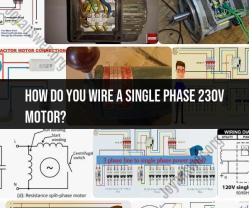How to start diesel generator?
Starting a diesel generator involves a series of steps to ensure that it runs smoothly and provides the power you need. Here's a step-by-step guide on how to start a diesel generator:
Note: Diesel generators can vary in design and features, so it's essential to refer to the specific manufacturer's instructions for your generator model. The following steps provide a general overview of the starting process.
Safety Precautions:
- Before starting the generator, ensure that you are in a well-ventilated area to avoid inhaling exhaust fumes. Check for any fuel or oil leaks and address them if necessary. Make sure the generator is on a stable and level surface.
Fuel Check:
- Ensure there is an adequate supply of diesel fuel in the generator's fuel tank. If the fuel level is low, add fuel to the tank.
Battery Check:
- Confirm that the generator's battery is connected and in good working condition. If the battery is weak or discharged, charge it or replace it as needed.
Prime the Fuel System (if required):
- Some diesel generators have a manual or automatic fuel priming system to remove air from the fuel lines. If your generator has this feature, follow the manufacturer's instructions for priming.
Set the Generator Control Panel:
- Access the generator's control panel, which is typically located on the generator set itself. Set the control switch to the "OFF" or "STOP" position.
Choke (if applicable):
- If your generator is equipped with a choke, engage it. The choke helps in starting the engine by increasing the air-fuel mixture's richness.
Turn the Key or Push the Start Button:
- Turn the key to the "START" position or press the start button, depending on your generator's design. The generator will crank and start.
Monitor the Startup:
- Pay close attention to the generator's startup. If the engine starts but does not run smoothly, allow it to warm up and stabilize. Some generators may need a few minutes to reach the proper operating temperature.
Release the Choke (if applicable):
- After the engine has started and is running smoothly, release the choke gradually. This allows more air into the engine, and the generator should run at a normal idle speed.
Monitor Gauges and Indicators:
- Keep an eye on the generator's control panel gauges and indicators. They will show you vital information such as voltage output, frequency, and any potential issues.
Connect the Load:
- After the generator is running smoothly, you can connect the load you want to power. This may involve plugging in extension cords or transferring electrical circuits to the generator using a transfer switch.
Shut Down the Generator:
- When you are finished using the generator, make sure to disconnect the load first. Return the generator's control switch to the "OFF" or "STOP" position. Allow the generator to run for a few minutes without a load to cool down before shutting it down completely.
Maintenance and Monitoring:
- Regularly monitor the generator during operation and perform routine maintenance tasks as specified in the manufacturer's manual to ensure it operates reliably.
Always consult your generator's owner's manual for specific instructions and safety precautions. Additionally, if you are not familiar with diesel generators or if you encounter any issues, it's advisable to seek assistance from a qualified technician or service provider.
Starting a Diesel Generator: Essential Steps and Safety
Pre-start checks:
- Check fuel levels and add fuel if necessary.
- Check oil levels and add oil if necessary.
- Check coolant levels and add coolant if necessary.
- Inspect the generator for any leaks or damage.
- Ensure the generator is properly grounded.
Starting the generator:
- Set the throttle to the start position.
- Engage the starter motor.
- Once the generator starts, allow it to run for a few minutes to warm up.
- Adjust the throttle to the desired speed.
Safety precautions:
- Never start a generator indoors or in a confined space.
- Keep the generator away from flammable materials.
- Do not touch the generator while it is running.
- Be aware of the generator's exhaust fumes.
The Basics of Initiating Power with a Diesel Generator
Connecting the generator to the load:
- Use a properly sized transfer switch to connect the generator to the electrical panel.
- Turn off all main breakers in the electrical panel.
- Turn on the generator's main breaker.
- Turn on the desired breakers in the electrical panel.
Transferring power to the load:
- Throw the transfer switch to the generator position.
- The generator will now be supplying power to the load.
Troubleshooting and Maintenance for Reliable Generator Start-Up
Common starting problems:
- Dead battery
- Low fuel levels
- Air in the fuel lines
- Faulty spark plugs or glow plugs
Maintenance tips:
- Regularly change the generator's oil and filters.
- Inspect the generator for any leaks or damage.
- Test the generator regularly to ensure it is working properly.
Efficient Practices and Pro Tips for Diesel Generator Owners
- Proper sizing: Ensure the generator is properly sized for the load it will be powering.
- Location: Place the generator in a well-ventilated area away from flammable materials.
- Maintenance: Regularly maintain the generator to ensure it is operating efficiently.
- Fuel storage: Store fuel in a cool, dry place.
- Testing: Test the generator regularly to ensure it is working properly.
Success Stories and Insights on Diesel Generator Operation
- Emergency backup power: Diesel generators are a reliable source of emergency backup power during power outages.
- Remote power: Diesel generators can be used to provide power in remote locations where grid power is not available.
- Cost savings: Diesel generators can be a cost-effective way to power large loads.
- Environmental impact: Diesel generators are a cleaner source of power than gasoline generators.
- Versatility: Diesel generators can be used to power a variety of equipment.













